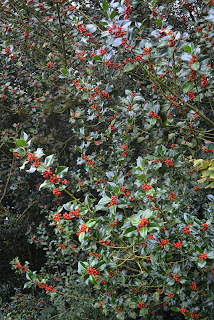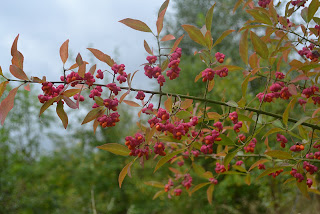4 October 2011 OS Explorer 181 Chiltern Hills North
Length: 20 minutes
The Bazeley is a variety of apple developed in the 19th century in The Lee, a village west of Chesham (= “Best-of-The-Lee”). It was once grown widely around the local area at the turn of the century when orchards were flourishing. The variety is now very rare, although they are still propagated in small numbers by nurseries such as Bernwode Plants in Bucks, who obtained stock from a former orchard now part of the home of actor Geoffrey Palmer in Hunts Green. Very few other examples survive. The apples were usually cooked, especially for mince pies, but can be eaten if picked in October and stored until January to mature.
Having heard of an old Bazeley beside a particular green lane, we parked at SP9902 where Leyhill Common funnels into the little village of Ley Hill just east of Chesham. There is plenty of room for parking here and a choice of two pubs unusually side by side, the Crown and the Swan, for refreshment after the short walk.
Adjacent pubs at Ley Hill
We took the bridleway along the north-west side of the common, which is now mostly golf-course. After less than 200 metres we encountered an old Malus domestica cultivar on the left where the ground was littered profusely with yellow apples. Here there is also an entrance to Crabtree Wood or Plantation , a joint biodiversity project between the landowners and Ley Hill School
Possible old Bazeley tree with windfalls
Unripe apples on tree
Windfalls
The tree fruits vigorously and the apples are not as small, hard or tart as crabs. Their yellow waxy skin is typical of a Bazeley, although they have degenerated with age to a size of only 4-5cm and many lack the typical oval shape. A characteristic of the Bazeley is a protuberance that often forms beside the stalk, and a good number of these apples showed this character, often in an exaggerated manner. In some cases the protuberance took the form of a second apple and was obviously derived from a second flower close to the first and the merging of their two fruits.
Selected windfalls, some showing protuberance by stalk
Extreme form of protuberance
Although the flesh was sweet we found the skin rather tough and acid at this stage, but we collected a good batch of windfalls for cooking.
The continuation of the green lane takes one past plenty of old trees, especially of wild cherry Prunus avium, oak Quercus robur, hornbeam Carpinus betulus, and ash Fraxinus excelsior, as well as many coppiced stools of hazel Corylus avellanus. At this time of the year these were largely fruiting abundantly, this being an excellent year for acorns, beech mast and holly Ilex aquifolium berries.
Acorns
Hornbeam fruit
Hazel coppice
Abundant holly berries
Crabtree Wood has many other fruiting bushes such as spindle Euonymus europaeus, blackthorn Prunus spinosa, sweet chestnut Castanea sativa and red osier dogwood Cornus sericea.
Sloes
Spindle
Sweet chestnut













No comments:
Post a Comment